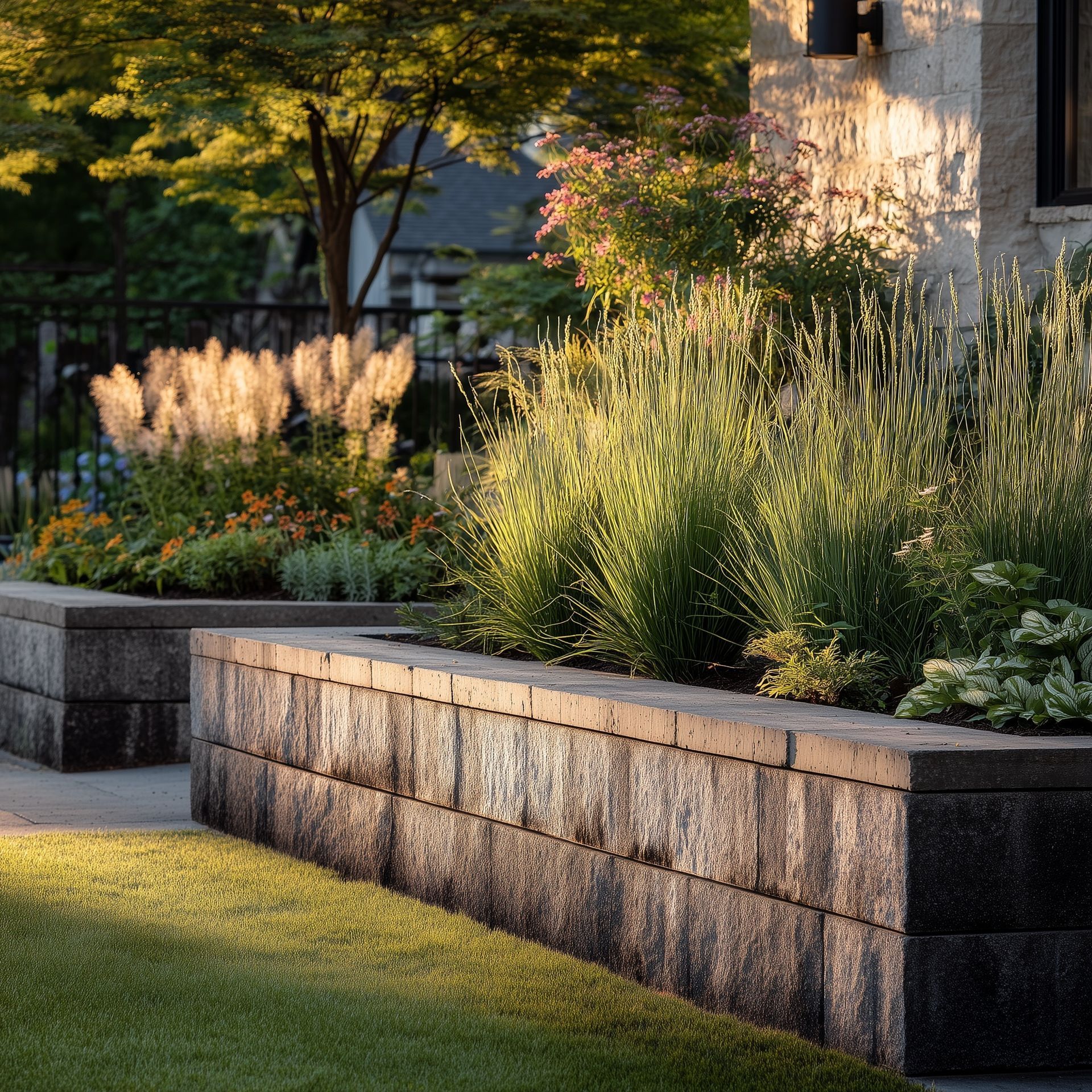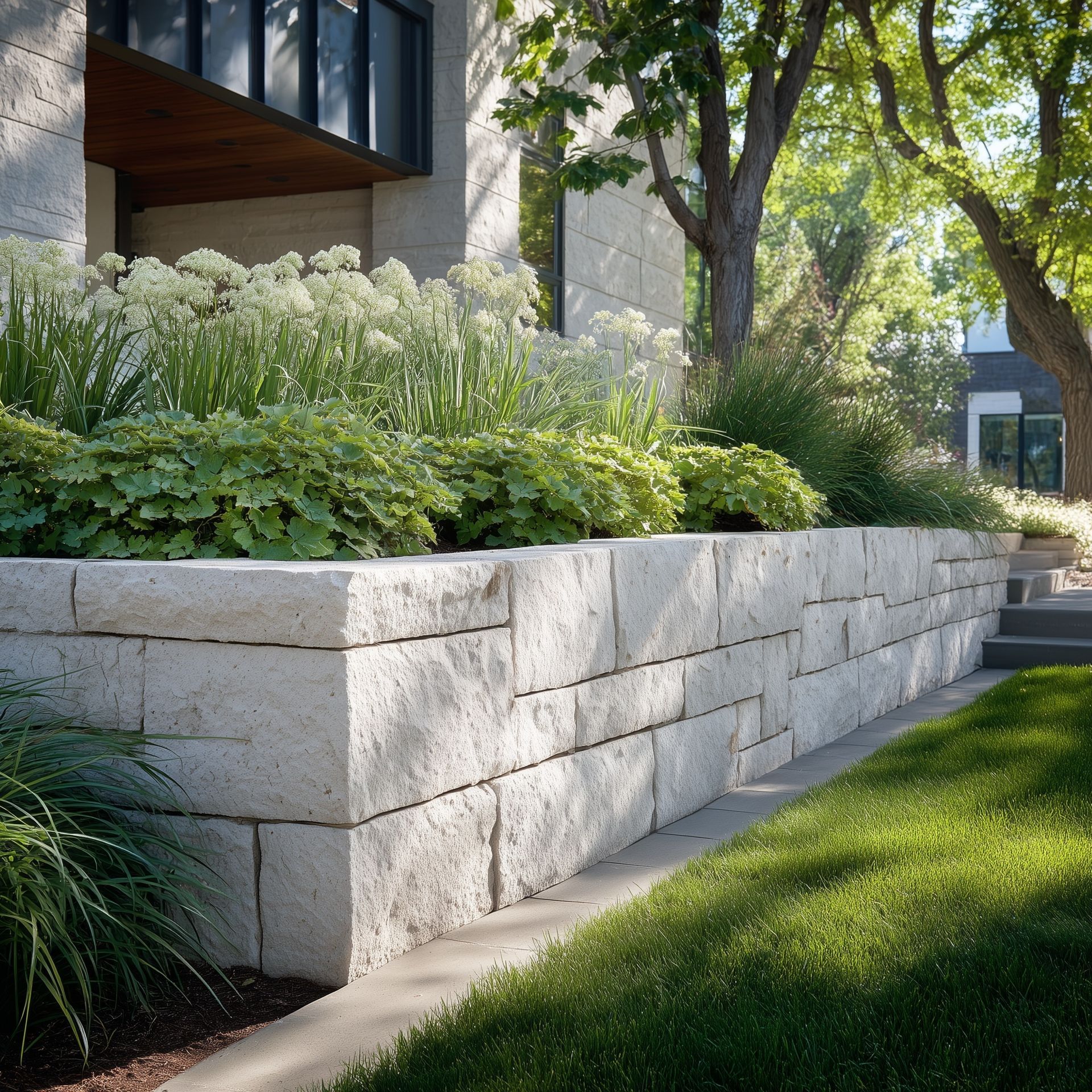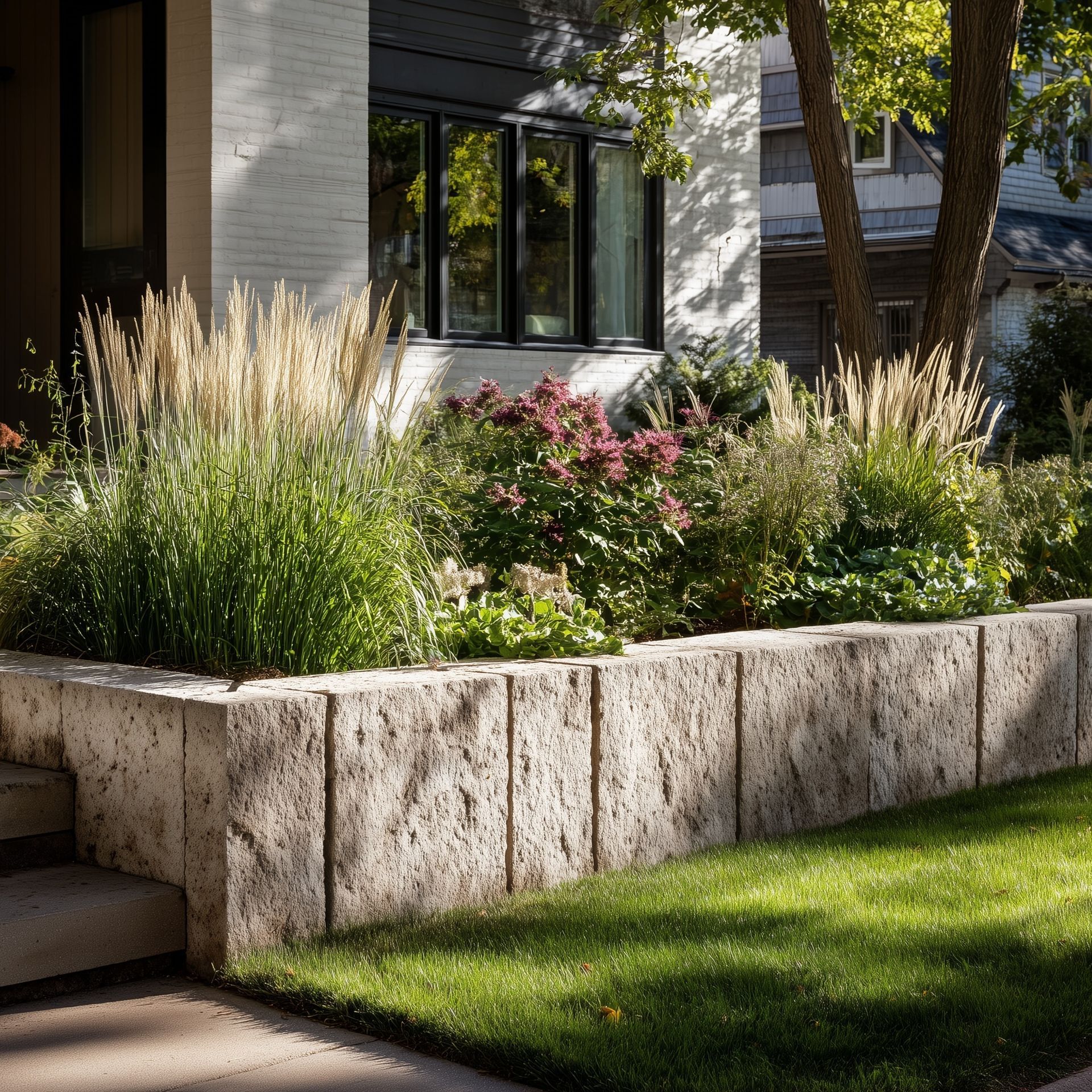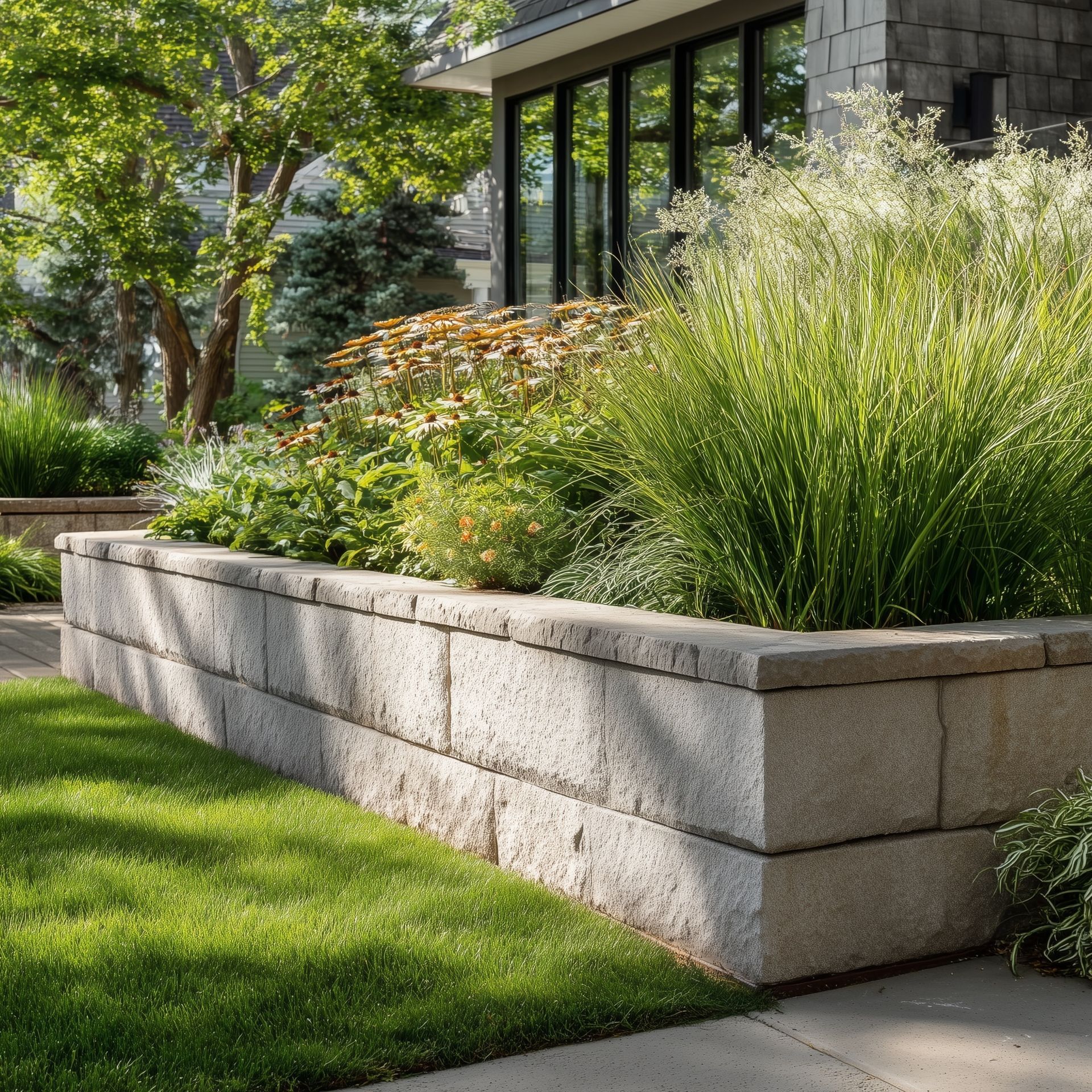Retaining Walls That Protect and Beautify Edina Yards

Why Edina Yards Need More Than Just a Pretty Wall
I’ve worked on a lot of yards in Edina over the years, and there’s one thing I see time and again: homes built into beautiful, mature landscapes that haven’t been graded or supported properly. Steep slopes might look fine when grass is new, but over time, gravity wins. The soil moves, water runs where it shouldn’t, and lawns that were once smooth start to dip, crack, or slide. That’s when people call me—and usually, the problem could have been avoided with one good retaining wall.
Here’s the truth: a well-built wall in Edina isn’t just for looks. It’s a structural feature that protects your home and outdoor spaces from water damage, erosion, and slope failure. But if you’ve ever driven through neighborhoods like Morningside or near Minnehaha Creek, you’ve seen the difference between walls that were engineered right and those that were just stacked to look nice. One will be standing straight in 20 years. The other will be leaning by the third winter.
Minnesota’s freeze-thaw cycles make this city a tough place for any retaining wall that’s not built correctly. When moisture seeps behind a wall and freezes, it expands and pushes outward with enormous force. Without proper drainage and base preparation, it doesn’t matter how expensive the stone is—the wall will fail.
That’s why I design every wall with function first. Beauty comes next, but it’s never an afterthought. When those two things come together—engineering and aesthetics—you get a wall that not only protects your property but also makes your landscape more usable, elegant, and timeless.

Creating Flat, Functional Spaces Families Actually Use
One of my favorite parts about building retaining walls in Edina is how they can completely change how families use their yards. A steep, uneven space that feels like wasted land suddenly becomes a series of level terraces—each one with its own purpose. I’ve built walls that transformed dangerous slopes into flat play spaces for kids, sports courts, or cozy fire pit areas where families gather for s’mores in fall.
If you have children, think about what flat space really means. It’s safety and usability. You’re not worrying about your kids slipping on a hill while playing soccer or running after the dog. You’re gaining lawn area you can actually enjoy. For families who love hockey, we’ve even turned previously unusable backyards into level winter rinks. When the seasons change, that same space becomes a spot for a swing set, volleyball net, or outdoor dining area.
But even if you don’t have kids, the benefit is the same. Level spaces give you flexibility—gardens, patios, seating walls, whatever fits your lifestyle. And the right retaining wall can make these transitions feel natural and beautiful, not forced. The best designs blend into the landscape rather than looking like someone carved up the yard and stacked stone to patch it back together.
In Edina’s older neighborhoods, where tree roots, aging soil, and slope erosion are common, we often use natural stone—Fond du Lac or Lannon stone—for both durability and aesthetics. These materials look sophisticated and hold up beautifully over time. They provide year-round interest, even when plants are dormant in winter. You look out your window in February, and instead of bare dirt and ice, you see clean lines, texture, and craftsmanship.

What Makes a Wall Last: Drainage, Footings, and Real Engineering
I can’t say this enough—drainage is what makes or breaks every retaining wall in Minnesota. The biggest mistake I see is walls built without a proper drainage system behind them. It’s not optional. Water always finds the lowest point, and if you trap it behind your wall, the freeze-thaw cycle will push that structure out one inch at a time until it fails.
Here’s how we build them at KG Landscape:
- Every wall starts with a compacted base of crushed gravel—at least 6 inches deep and perfectly leveled.
- Behind the wall, we install a layer of free-draining aggregate wrapped in fabric to prevent soil from clogging it.
- A perforated drain tile (with a silt sock) runs along the bottom to collect and redirect water away from the structure.
- We backfill in lifts and compact as we go, so there’s no hidden air pocket or soft spot that will shift over time.
If a wall is taller or retaining a steep grade, we engineer it to include geogrid reinforcement—essentially a buried anchor that ties the wall back into the soil behind it. That’s how you get a structure that doesn’t just look solid but is solid.
In Edina, the soil tends to be heavier and hold more moisture than in some surrounding suburbs, so these drainage and footing details become even more important. A properly engineered wall actually relieves pressure behind it instead of just trying to hold it back. That’s the difference between a system designed to last 50 years and one that needs repair every five.
It’s not the glamorous part of landscaping, but it’s what keeps everything else working as intended. The walls we build today are still going to look straight and strong decades from now, and that’s the kind of work I’m proud to put my name on.

Design That Feels Elegant Year-Round
A retaining wall should never look like a barrier. It should look like part of the landscape. That’s where design really comes in.
In Edina, clients often want their outdoor spaces to reflect the elegance of their homes—classic, clean, and timeless. That’s why I tend to recommend natural stone over manufactured block when the budget allows.
Materials like Fond du Lac or Lannon stone give the landscape an upscale, handcrafted appearance that lasts through every season. In summer, it contrasts beautifully with greenery. In winter, it gives the yard structure and texture when everything else is bare.
Lighting can make a huge difference too. Integrated wall lighting—soft, low-voltage fixtures that highlight the stone texture—adds warmth and safety. When snow falls, those lights reflect off the surface and create a beautiful glow. It’s small touches like this that elevate a yard from functional to unforgettable.
And if you’re pairing the wall with a patio or steps, it’s best to design them together. That way, everything feels intentional. The materials match, the lines flow, and you end up with a cohesive outdoor environment that feels like an extension of your home rather than an add-on.
Retaining walls, when designed this way, do more than hold soil—they define your outdoor experience. They make your yard usable, your property more valuable, and your home look better from every angle.
If you’re in Edina and ready to reclaim your yard’s potential, start with a plan. One well-built wall can change everything about how you live outside.
FAQs
Do retaining walls require permits in Edina?
Yes. Most walls over 4 feet in height require permits and possibly engineering approval. We handle that process for you and ensure every project meets local code.
What’s the best material for a retaining wall in Edina?
Natural stone like Fond du Lac or Lannon is both durable and visually timeless. For more cost-sensitive projects, we use high-quality segmental retaining wall systems designed to perform well through freeze-thaw cycles.
How long should a retaining wall last?
With proper engineering, drainage, and materials, you should expect 40–50 years of stability with only minor maintenance over time.










